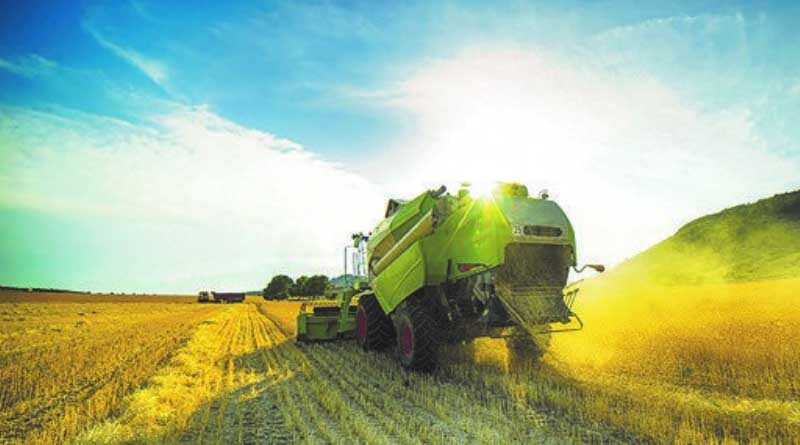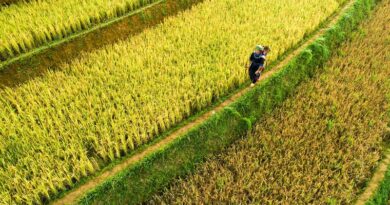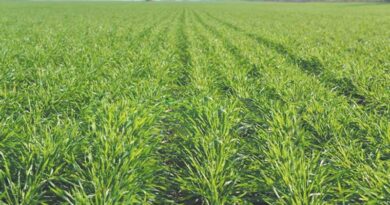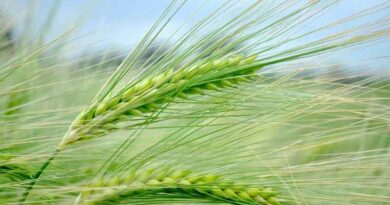Falling prices bring consumers relief
08 November 2021, China: Vegetable prices are falling nationwide after good weather at the start of this month relieved tight supplies, according to agriculture officials and experts.
Since late September, rising prices for vegetables across China had triggered concern among consumers and vendors, with some leafy greens reportedly costing more than pork.
Lang Baosheng, a dealer at the Xinfadi wholesale market in Beijing, used to buy spinach from Shandong province, the country’s major vegetable hub, but this year he had to buy greens from Heilongjiang province.
“In past years, the price of spinach produced in Shandong was only 1.60 yuan to 2.40 yuan (25 US cents to 38 cents) per kilogram, but the wholesale price soared to 10 yuan last month. It was too expensive to choose,” Lang said.
Xu Dejun, 50, a vendor at the Tianlihong community market in Beijing’s Chaoyang district who buys vegetables from the Xinfadi market every day, said: “Last week, spinach was sold to consumers for 26 yuan per kg, a price rarely seen. It has since dropped to 12 yuan.” She added that she made only a small amount for every kg sold.
Liu Chunlan, a buyer at the community market, said last week that prices for leafy green vegetables this year were too high.
“Prices recently have been about the level seen during the Spring Festival holiday in past years. Maybe COVID-19 outbreaks affected the transportation of vegetables,” Liu said.
Last month, the average wholesale price for 28 types of vegetables monitored by the Ministry of Agriculture and Rural Affairs was 5.25 yuan (82 cents) per kg, a rise of 16.7 percent from September, and a year-on-year rise of 11.7 percent.
In the final week of last month, the average price for 19 varieties of vegetable rose by 49.1 percent from a year ago, and was up by 13.5 percent from the previous week.
Zhang Jing, an analyst at the ministry, said that in typical years vegetable market volume in China peaks in October, after which prices usually fall gradually.
From 2018 to last year, vegetable prices on average fell by 3.6 percent in October from the previous month.
Zhang said: “This year, prices rose in October, rather than falling. The main reason for the surge was the crop failure in North China due to earlier disastrous weather.”
Since late September, main vegetable producing areas in the north of the country, including Liaoning, Shandong and Hebei provinces and Inner Mongolia autonomous region, experienced torrential rain, which left fields waterlogged.
Autumn vegetables were damaged in the floods. Varieties such as cucumber and spinach could not be sent to market, while planting of new crops was delayed.
“The sharp decline in output resulted in prices rising,” Zhang said.
Flooding damage
Tang Ke, director of the ministry’s Market and Economic Information Department, said autumn floods damaged more than 130,000 hectares of vegetables. Low temperatures and a lack of sunshine also affected vegetable growth.
In addition, the cost of yields rose due to rising prices for fertilizers and pesticides, Tang said.
The rising cost of regional transportation was another reason for the surging prices.
“Shandong Shouguang Vegetable Industry Group said it cost 4,000 yuan per truck to transport vegetables to Jinhua, Zhejiang province, in the first half of this year, but charges rose to 6,000 yuan in the second six months,” Tang said.
Insufficient power supplies for greenhouse vegetables in northern areas, and recent sporadic local outbreaks of COVID-19, also affected vegetable production and sales.
Farmers’ Daily quoted vegetable producers as saying that despite the higher prices, their incomes had not risen.
Dong Zhongbo, a planter in Henan province, said vegetable yields were greatly affected by bad weather.
“Last year, cucumber output was 225 metric tons per hectare, but it has fallen to a dozen tons this year,” Dong said, adding that farmers’ incomes will not rise without a certain level of yield.
However, Tang said that except for leafy greens such as spinach, rapeseed, lettuce and celery, prices fell a little, but the production area and output of other major varieties increased slightly. Overall, there were sufficient supplies.
China is expected to produce 750 million tons of vegetables this year, a year-on-year rise of 1 percentage point.
According to estimates, in three months, there will be sufficient stocks to supply every person in the country with 1.5 kilograms of vegetables per day.
Tang said vegetable production and supplies during the Spring Festival holiday and Winter Olympic Games in Beijing will be normal.
Zhang, the analyst, said tight supplies will be eased, as varieties due to have been planted in autumn gradually appear on shelves, and winter stocks from southern areas of the country, along with greenhouse vegetables, will be available next month.
Harvesting starts
Tang said the harvest season has begun in 13 provinces, ensuring that supplies reach the market.
Late last month, Guangdong Agriculture Bureau said that output of winter vegetables in the province had exceeded 10 million tons, with 50 percent to 60 percent of that total going to areas outside Guangdong.
In North China, vegetable production has largely returned to normal, thanks to generally good weather since the middle of last month.
Tang said, “Falling prices for spinach and lettuce in some areas reflect the improving supply and demand situation.”
Wang Ling, who lives in Chaoyang district, Beijing, said: “Vegetables were recently expensive, with broccoli priced at 20 yuan per kg. The price is now only 12 yuan. That’s great.”
The ministry has taken measures to ensure vegetable supplies are available nationwide in autumn and winter, while stabilizing prices.
Areas producing greenhouse vegetables have been urged to make good use of such premises that are vacant.
To improve self-sufficiency, cities are being encouraged to develop leafy green vegetables that are difficult to store or transport.
The ministry is instructing local authorities to arrange a structure for vegetable varieties and a planting scale. “We are encouraging planters and cooperatives to expand their plantations,” Tang said.
Emergency plans for vegetable production should be drawn up to limit the possible impact of La Nina, the periodic cooling of ocean surface temperatures in the central and eastern Pacific, the ministry said.
Measures should be taken in areas producing vegetables to monitor and prepare for bad weather and insect disasters, it added.
Local authorities are being urged to promptly release information about vegetable production, deliveries and consumption. “Green channels for fresh agricultural produce should be established,” the ministry added.
Cities have been told to ensure that emergency supplies are available during the pandemic.
After vegetable prices started to fluctuate in Zhengzhou, Henan, the agricultural produce delivery center arranged for traders to boost purchases and also increased supplies, especially for varieties that had seen high price rises.
By the end of last month, the price of spinach in 80 percent of the city’s markets had been stabilized at 12 yuan per kg, according to Zhengzhou Daily.
To stabilize prices in Beijing, the authorities have exempted entry charges for vegetables and five types of domestic fruit shipped to major agricultural produce wholesale markets.
The city will subsidize markets from Nov 1 to March 15, according to a circular released by the municipal commerce bureau on Nov 1.
Tianjin has launched “government-reserved vegetables” at prices about 40 percent lower than those seen typically, while Wuhan, capital of Hubei province, has limited the price of vegetables for 15 consecutive days, according to the National Development and Reform Commission.















